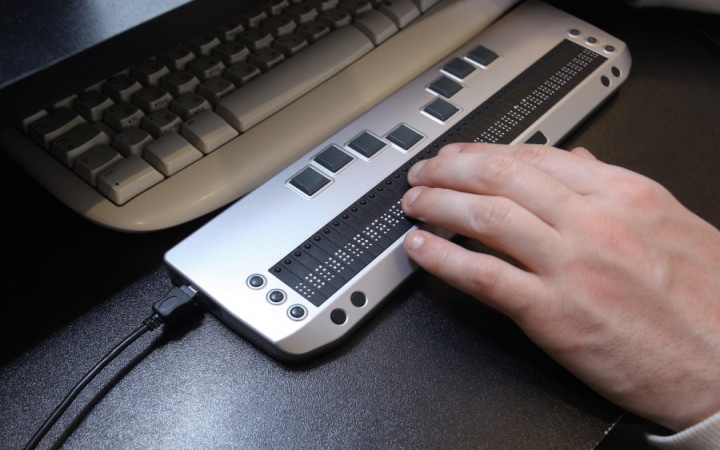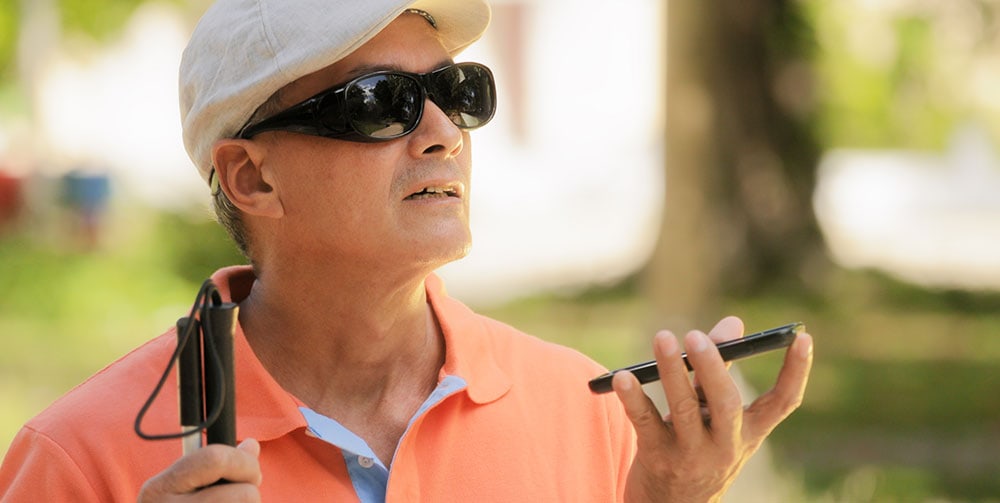Discover Ingenious Tools Created for the Visually Impaired
The growth of ingenious devices for the visually damaged stands for a significant advancement in accessibility and freedom. Technologies such as clever glasses with AI capacities and mobile applications designed to supply acoustic descriptions are improving daily experiences for users.
Smart Glasses for Navigation

Smart glasses developed for navigating are revolutionizing the way aesthetically impaired people communicate with their environment. These innovative gadgets utilize a mix of camera modern technology, fabricated intelligence, and auditory feedback to offer real-time information concerning environments. By using challenge detection systems, wise glasses can notify users to possible dangers, allowing more secure movement in both acquainted and strange setups.
The assimilation of GPS technology additionally boosts navigating abilities, allowing individuals to receive acoustic directions as they move. This hands-free technique not just promotes independence but likewise empowers visually impaired people to browse urban landscapes with boosted confidence. In addition, several smart glasses are furnished with attributes that identify sites and street indications, providing contextual info that improves the user experience.
Additionally, the advancement of these gadgets is continually progressing, with firms working to improve the accuracy of object acknowledgment and increase the array of navigational attributes. As wise glasses end up being a lot more inexpensive and easily accessible, they hold the potential to significantly change life for aesthetically impaired individuals. Eventually, these ingenious devices represent an essential action towards inclusivity, offering improved movement and a higher sense of autonomy for individuals browsing the world around them.

Mobile Application for Daily Living
Exactly how can mobile applications improve the every day lives of aesthetically impaired people? Mobile applications are changing the method aesthetically damaged individuals navigate their environments, handle daily jobs, and accessibility info. These applications provide essential support via numerous functionalities, promoting self-reliance and improving top quality of life.
Several innovative mobile applications are made especially for everyday living. For example, applications like Be My Eyes attach aesthetically damaged customers with sighted volunteers by means of video clip phone calls, allowing them to get real-time help with tasks such as reading labels or navigating unknown spaces. Seeing AI, developed by Microsoft, makes use of man-made knowledge to describe surroundings, reviewed message, and determine things, efficiently transforming a smart device into a powerful device for everyday support.
In addition, navigating applications tailored for the visually damaged, such as Aira and BlindSquare, offer audio-based directions and ecological info, allowing customers to traverse their environments securely and with confidence. Past navigation and immediate aid, mobile apps likewise support company and job monitoring, with attributes that help customers establish tips, create to-do lists, and track consultations. In summary, mobile applications work as crucial resources, equipping aesthetically impaired people to lead even more independent and fulfilling lives.
Wearable Technologies for Assistance
Empowerment via technology is significantly noticeable in the world of wearable tools made to aid visually impaired people. These cutting-edge tools integrate perfectly right into day-to-day live, boosting navigating and giving important feedback to individuals. For example, clever glasses geared up with cameras can review and identify faces text aloud, enabling individuals to engage even more confidently in expert and social settings.
An additional significant innovation is making use of haptic comments systems in wearable tools. These systems make use of vibrations or various other tactile signals to share info regarding the user's setting, such as barriers or modifications in surface, enhancing flexibility and safety. Wearable innovations additionally include wristbands that attach to mobile phones, informing individuals to alerts with subtle see page resonances, thus improving connection without dependence on visual hints.
As these innovations remain to progress, they are not only improving freedom for visually damaged individuals but likewise promoting a greater feeling of inclusion in culture. By connecting view website the void in between difficulties faced in everyday living and the potential for autonomy, wearable innovations work as critical tools in the pursuit for equal rights and empowerment for those with visual problems.
Sound Description Devices
Sound summary devices play an important role in boosting availability for visually damaged people, offering them with the ability to engage with visual media. Braille displays and notetakers. These devices supply narrated descriptions of essential visual components in films, television shows, and live efficiencies, making sure that customers can totally comprehend the context and feelings conveyed with visuals
Audio summary can be integrated right into various systems, including streaming solutions, movie theater screenings, and live theater. Several prominent streaming solutions currently include audio summary as an accessibility function, enabling viewers to pick it quickly. Along with conventional media, specialized apps additionally exist, supplying audio summaries for art exhibits, galleries, and other cultural occasions.
The performance of audio summary rests on the skill of the storytellers, that must convey visual details succinctly without diminishing the original sound. Developments in this field are also leading the way for even more tailored experiences, where individuals can change the degree of detail and pacing according to their preferences.
Braille Innovations and Gadgets
Braille gadgets and technologies have substantially changed the method aesthetically impaired individuals communicate with text and details. Modern improvements have led to the growth of versatile devices that boost proficiency and independence amongst users.
Furthermore, portable Braille notetakers incorporate traditional Braille input with contemporary capabilities, assisting in note-taking, organizing, and document modifying on the go. Assistive technology for the blind. These compact tools usually feature text-to-speech abilities, connecting the gap in between Braille and acoustic information
On top of that, cutting-edge Braille printers walk in optometrist near me have emerged, allowing users to create Braille labels, documents, and academic products efficiently. This access fosters greater participation in professional and instructional settings, inevitably promoting inclusivity.
Additionally, research into wise Braille technologies remains to expand. Tools that incorporate expert system are being explored to provide real-time navigation support and contextual info, boosting the user experience in diverse setups. Generally, these innovations mirror a dedication to encouraging aesthetically impaired people through technology, guaranteeing they can quickly gain access to and involve with the globe around them.
Conclusion
The advancement of innovative tools for the visually impaired significantly boosts self-reliance and top quality of life. These modern technologies not only foster higher inclusion however additionally advertise autonomy in day-to-day tasks, inevitably contributing to a more easily accessible and equitable society for visually damaged people.
As clever glasses end up being extra obtainable and budget-friendly, they hold the possible to considerably change day-to-day life for visually damaged customers. Mobile applications are reinventing the way visually damaged individuals browse their environments, manage everyday jobs, and accessibility details. Applications like Be My Eyes connect visually impaired individuals with sighted volunteers by means of video calls, permitting them to obtain real-time assistance with jobs such as checking out labels or navigating unknown spaces.Additionally, navigation apps customized for the visually damaged, such as Aira and BlindSquare, offer audio-based instructions and ecological details, allowing users to traverse their surroundings safely and with confidence.The innovation of innovative tools for the aesthetically damaged dramatically enhances self-reliance and quality of life.